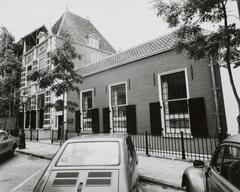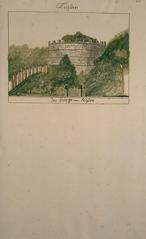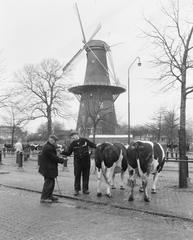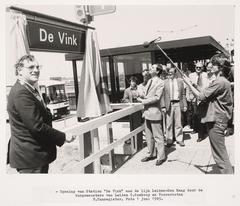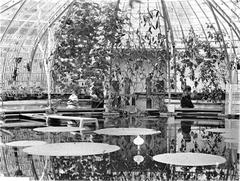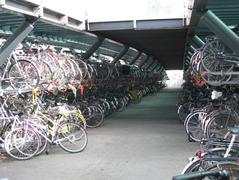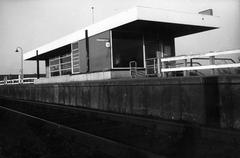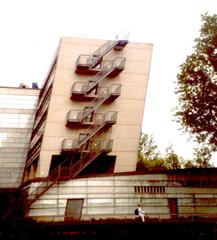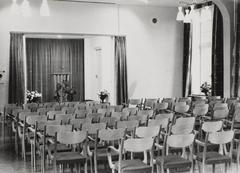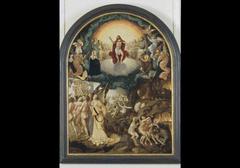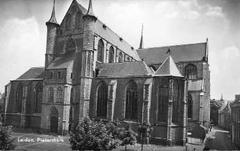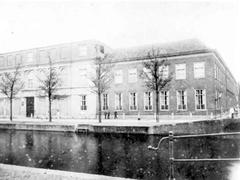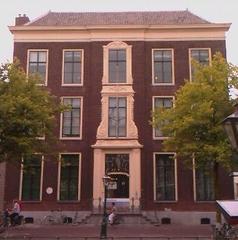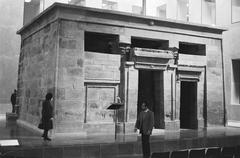Zijlbrug Visiting Hours, Tickets, and Guide to Leiden Historical Sites
Date: 04/07/2025
Introduction
The Zijlbrug, one of Leiden’s most distinctive landmarks, stands at the crossroads of history, architecture, and daily life in the Netherlands. Since its inauguration in 1967, this modernist bascule bridge has served as a vital connector between Leiden’s historic city center and its northern neighborhoods, bridging the Zijl river and integrating seamlessly into the city’s extensive canal network. Renowned for its functional yet striking design—including the iconic glass bridgekeeper’s house—the Zijlbrug exemplifies post-war Dutch engineering, adaptive urban planning, and the enduring relationship Leiden maintains with its waterways. This guide provides comprehensive information for visitors, including opening hours, accessibility, travel tips, historical insights, and recommendations for exploring the city’s rich cultural landscape (Brugwachtershuisjes, Sleutelstad, Visit Leiden).
Table of Contents
- Historical Context of Zijlbrug
- Architectural Features
- Significance in Leiden’s Urban Landscape
- Practical Visitor Information
- Tips for a Memorable Visit
- Frequently Asked Questions (FAQ)
- Preservation and Adaptive Reuse
- Conclusion and Additional Resources
Historical Context of Zijlbrug
The Zijlbrug was constructed during the Netherlands’ rapid post-war modernization, opening in 1967 to accommodate growing traffic and urban expansion. Spanning the Zijl river—linking the Oude Rijn to the Kagerplassen lake district—it marked the northern gateway to Leiden and facilitated both road and water traffic (Brugwachtershuisjes). Traditionally, bridges in the Netherlands were operated by resident bridgekeepers, but technological advancements led to remote operation, rendering many bridgekeeper’s houses obsolete (Sleutelstad).
This bridge exemplifies the transformation of Dutch infrastructure management, reflecting trends of automation and adaptive reuse.
Architectural Features
Bridge Structure
The Zijlbrug is a bascule (drawbridge) bridge, designed to support heavy vehicular, cyclist, and pedestrian traffic while allowing boats to pass. Its modernist design features robust concrete and steel construction with clean, functional lines typical of 1960s Dutch engineering. The mechanisms are discreetly housed, maintaining a sleek appearance (Brugwachtershuisjes).
Key Technical Details
- Vertical clearance (closed): 4.91 meters
- Width: 10.5 meters
- Navigable openings: 2, accommodating a wide variety of vessels
- Operation: Scheduled openings for commercial and recreational boat traffic (waterkaart.net)
The Bridgekeeper’s House
Built alongside the bridge, the bridgekeeper’s house is a prime example of Dutch modernism, with glass walls providing panoramic views of the river and roads. Compact (approx. 13 m²), it features minimalist amenities and was designed for efficient bridge operation. Today, it stands as a visual landmark and is available for creative adaptive reuse proposals (Sleutelstad).
Significance in Leiden’s Urban Landscape
Zijlbrug functions as more than a mere crossing; it marks the transition from Leiden’s rural outskirts to its vibrant city core. It is an essential component of Leiden’s extensive network of over 80 bridges and canals, known for its blend of historic and modern architecture. The bridgekeeper’s house adds a historical layer, linking the tradition of manual bridge operation to contemporary infrastructure and serving as a potential site for community-focused adaptive reuse (Towns of Europe).
Practical Visitor Information
Visiting Hours and Access
- Bridge: Open 24/7 for pedestrians, cyclists, and vehicles; no tickets or entry fees required.
- Bridgekeeper’s House: Not generally open to the public; viewable from the outside. Occasionally available for special cultural events or guided tours (Sleutelstad).
Bridge Operation Hours (for boats)
- Weekdays: 06:00–22:00
- Weekends/Holidays: 09:00–19:00
- Holidays (Christmas/New Year): 06:00–18:00
- Opening frequency: Commercial vessels every 30 minutes during peak hours; recreational boats accommodated every 15 minutes during off-peak (waterkaart.net)
Accessibility
- Pedestrians & Cyclists: Dedicated, safe paths.
- Wheelchair & Stroller Access: Smooth surfaces and gentle ramps.
- Public Transport: Short walk from Leiden Central Station; nearby bus stops (Visit Leiden).
Transportation
- By Bike or Foot: Leiden is famed for its bike-friendly infrastructure.
- By Car: Limited street parking nearby; public transport recommended.
- By Boat: The Zijlbrug is a key waypoint for canal cruises and private boaters.
Guided Tours and Events
- Tours: While there are no dedicated Zijlbrug tours, the bridge features in Leiden’s popular canal and historic site tours (reisenexclusiv.com).
- Events: Occasional cultural events and exhibitions in the bridgekeeper’s house; check local listings.
Nearby Attractions
- Singelpark: Green belt around city center.
- Canal Cruises: Guided boat tours depart nearby (The Tourist Checklist).
- Cafés & Restaurants: Waterside terraces are popular in summer.
- Historic Landmarks: Museum De Lakenhal, Hortus Botanicus, and city gates.
Tips for a Memorable Visit
- Best time: Early morning or late afternoon for tranquil views and photography.
- Cycling: Rent a bike to explore the bridge and surrounding neighborhoods.
- Events: Visit during local festivals for a livelier atmosphere (Dreams Abroad).
- Safety: Observe bridge opening signals and use designated paths.
- Accessibility: The area is well-suited for families and those with mobility aids.
Frequently Asked Questions (FAQ)
Q: Do I need a ticket to visit Zijlbrug?
A: No; it is free and open to the public.
Q: When does the bridge open for boats?
A: Scheduled times throughout the day; check waterkaart.net or local signage.
Q: Is Zijlbrug wheelchair accessible?
A: Yes, with smooth ramps and surfaces.
Q: Can I visit the bridgekeeper’s house?
A: Not regularly, but special tours may be available during heritage events.
Q: Are guided tours available?
A: The bridge is included in some canal and walking tours; inquire at the VVV Tourist Office.
Preservation and Adaptive Reuse
Mid-20th-century infrastructure like the Zijlbrug and its bridgekeeper’s house face challenges of preservation in the modern era. Locally, organizations advocate adaptive reuse, transforming these structures into cultural spaces while retaining original architectural features (Brugwachtershuisjes, Plevoets & Van Cleempoel, 2019). The Zijlbrug bridgekeeper’s house is a prime candidate for such initiatives, with opportunities ranging from micro-museums to studios or cafés.
Conclusion
The Zijlbrug is a living symbol of Leiden’s blend of historical depth, engineering innovation, and urban vibrancy. Its modernist bridge and glass-walled bridgekeeper’s house represent the city’s commitment to both preservation and progress. Whether you’re crossing the bridge by foot, bike, or boat, or simply admiring its architecture at sunrise, the Zijlbrug offers insight into the Dutch tradition of harmonizing infrastructure with community life and natural beauty.
Plan your visit to experience this essential piece of Dutch heritage, and stay updated on cultural events and guided tours through resources like the [Audiala app] and Leiden’s official tourism channels.
Visual Gallery
Alt text: Zijlbrug in Leiden illuminated by the warm light of sunset, showcasing the glass bridgekeeper’s house.
Alt text: Map showing the location of Zijlbrug in relation to Leiden city center and nearby attractions.
Additional Resources & References
- Brugwachtershuisjes – Zijlbrug
- Leiden Holland
- Waterkaart – Zijlbrug
- Visit Leiden
- Adaptive Reuse of the Built Heritage – Concepts and Cases of an Emerging Discipline
- Zijlbrug (Leiden) - Wikipedia
- Sleutelstad – Bridgekeeper’s House Rental
- Towns of Europe – Leiden
- The Tourist Checklist – Things to Do in Leiden
- Dreams Abroad – Guide to Leiden
